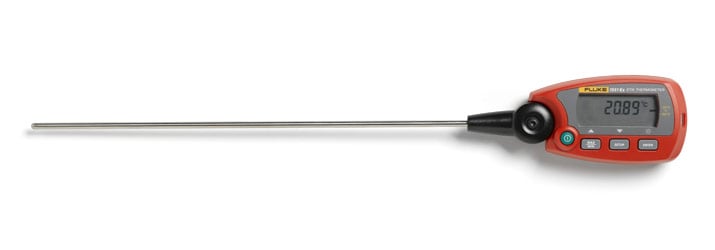On-the-spot temperature checks using portable thermometers are frequently performed in the field by technicians in order to ensure product quality. It is a best practice to verify the portable thermometer, either liquid-filled or electronic, against an accurate reference before beginning rounds to take those spot checks.

Ideally, the thermometer will be checked as close as possible to the expected temperature measurement. For example, the expected temperature of the gas in a pipeline. Personal electronic thermometers (PETs) can be verified in the field with a portable dry well. The dry well is set to the expected temperature and the thermometer inserted to verify the reading.
Thermometers can also be checked in an office, laboratory or, if in a remote area, at a tool shed with a dry-block or microbath calibrator.
Dry blocks aren’t suitable for liquid-filled glass thermometers so the accuracy check is performed using a constant temperature fluid bath, such as the Fluke Calibration 6330.
If the error of a liquid filled thermometer is large, it is best to discard the thermometer. Another option if the thermometer is slightly off is to write a correction table and adjust the reading accordingly.
Some portable electronic thermometers can be recalibrated if the readings are off, though others must be replaced.